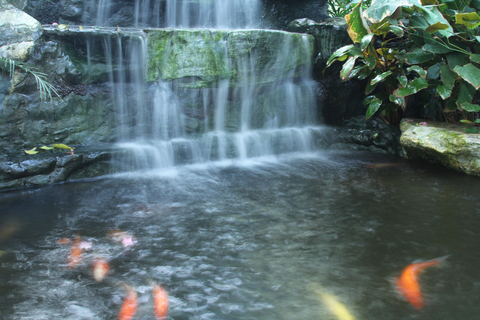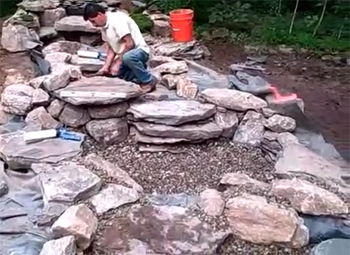ARTICLES
Advance Search
Aquatic Health
Aquatic Health, Fitness & Safety
Around the Internet
Aquatic Culture
Aquatic Technology
Artful Endeavors
Celebrity Corner
Life Aquatic
Must-See Watershapes
People with Cameras
Watershapes in the Headlines
Art/Architectural History
Book & Media Reviews
Commentaries, Interviews & Profiles
Concrete Science
Environment
Fountains
Geotechnical
Join the Dialogue
Landscape, Plants, Hardscape & Decks
Lighter Side
Ripples
Test Your Knowledge
The Aquatic Quiz
Other Waterfeatures (from birdbaths to lakes)
Outdoor Living, Fire Features, Amenities & Lighting
Plants
Ponds, Streams & Waterfalls
Pools & Spas
Professional Watershaping
Structures (Editor's Notes)
Travelogues & History
Water Chemistry
WaterShapes TV
WaterShapes World Blog
Web Links
Around the Internet
Aquatic Culture
Aquatic Technology
Artful Endeavors
Celebrity Corner
Life Aquatic
Must-See Watershapes
People with Cameras
Watershapes in the Headlines
Compiled and written by Lenny Giteck Indian Monkey Swims Daily Laps in Mumbai Public Pool
Once while visiting our nation’s capital, I walked past an odd-looking fountain that really didn’t make much of an impression at the time. Silly me, because of all the fountains and other watershapes I’ve seen, this one turns out to have one of the most weirdly interesting stories I’ve ever encountered.
This isn’t one of the display fountains that are so common around the district; rather, it’s a drinking-water fountain donated to the city of Washington, D.C., in 1882 by Henry Cogswell, a San Francisco dentist and national temperance crusader who believed that access to fresh, cold drinking water would lure the casual tippler away from the temptations of the city’s many saloons.
The Women’s Christian Temperance Union backed a similar campaign, but where that organization’s drinking fountains were on the plain side, Cogswell had grander aesthetic ambitions and aimed at installing one of his elaborate, self-designed drinking fountains for every 100 saloons in cities across the country. His saw the fountains’ simple engraved messages of faith, hope, charity and temperance as the linchpin of a nationwide campaign to encourage abstinence.
CC BY-SA 3.0, via Wikimedia Commons"There were a couple problems: First, even in 1882 the total number of saloons across the country was overwhelming; second, Henry’s fountains leaned toward the ornate side, with water issuing from the mouths of scaly dolphins. Then there was the fact that cooling the water meant stocking the basin with blocks of ice on a steady basis – a maintenance nightmare that cities overcame by disconnecting the supply pipes.
Dry fountains don’t offer much comfort or satisfaction to anyone, which may explain why Washington’s Temperance Fountain has been moved on a few occasions – shifting from its original, prominent position on Pennsylvania Avenue to the far-less-prestigious placement on Indiana Avenue near the National Archives. (That’s where I happened upon it early in the 1990s.)
It’s interesting to note that the aesthetic undesirability of Cogswell’s fountains is said to be single-handedly responsible for the emergence of civic arts committees that are charged with reviewing and approving applications for the installation of monuments in cities across the country. I hope that’s not entirely true, mainly because I see these fountains as hearkening back to the days when all public drinking water came, for good or ill, from sources such as these.
So while Cogswell’s Temperance Fountains may be as homely as mud fences, they’re also keenly interesting from historic and cultural perspectives – which makes me glad that the one in Washington at least is on the National Register and will be with us for years to come. Examples can also still be found in New York City, Pawtucket, R.I., and Rockville, Conn. Alas, they were built but have been torn down elsewhere, including Buffalo and Rochester in New York, Boston and Fall River, Mass., and in San Francisco, San Jose and Pacific Grove, Calif.
The saloons may have won the day, but to me, I’ll always have a place in my heart for Cogswell and his weird, well-intentioned fountains.
If you’re responsible for keeping up a watergarden, you probably know how important including a good balance of aquatic plants and fish is to sustaining a healthy ecosystem. You also likely know that some basic maintenance is important, too – including chores such as
This was a fun project in lots of ways – not the least of which involved figuring out how to fit a skimmer into the system without completely disrupting the clean look of the coping-only treatment of the pool’s perimeter. Usually, of course, pools at grade level are
‘As watershape designs have become more creative, more competitive and ultimately more valuable to our clients than we once were, it’s natural that we have started paying more attention to protecting our output.’ That’s how Brian Van Bower began in his July 2008 Aqua Culture column. He continued: ‘This is indeed a large and important issue for many people in our business, virtually to the point where watershapers are now facing the same sorts of concerns that have preoccupied architects and landscape architects for decades. And we’ve caught up with our colleagues at
The Rolling Stones’ Brian Jones: Accidental Drowning or Murder?
‘What’s the use of knowing about history?’ That’s the question Mark Holden asked to start his Currents column in the July 2008 issue. ‘For many of us, the answer to that question seems so obvious that it comes as a shock to find out just how many people in the watershaping and landscape fields don’t grasp the all-encompassing significance of our collective past – but it shouldn’t. ‘Using my own career as an example, . . . I confess that I waltzed through more than a few early years as an aspiring landscape architect and watershaper in blissful ignorance of the history of
Of all the innovations related to pond technology, design and installation I’ve encountered in recent years, the most curious one to me has always been the “pondless waterfall.” In an industry where the highest aspiration is always toward achieving truly naturalistic results, having the water reach the bottom and percolate into a bed of stones rather than into a large, attractive pool of water leaves the designer or installer with the challenge of making the project work visually (and emotionally) in what can clearly be perceived as an artificial context. To overcome these perceptions,
Compiled and written by Lenny Giteck Female Iranian’s Record Swim Goes Unrecognized




















Conflicted Interests